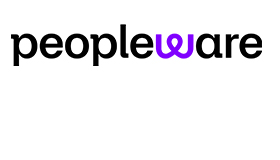Ole Klinge of injixo shares nine key questions to consider before installing a workforce management (WFM) tool in your contact centre.
1. Why Would Your Contact Centre Need a WFM Tool?
Contact centres use workforce management software for a variety of reasons. If your contact centre has set out to reach any of the following goals, a WFM tool will be able to help.
- Reduce the amount of effort spent on forecasting, scheduling and real-time management
- Consistently achieve your service level goals or desired agent occupancy
- Ensure planning efficiency, i.e. cover fluctuations in contact volume over the course of the day or the week as optimally as possible with the available agents
- Simplify and automate how employees can request time off
- Automate shift swaps between agents
- Engage agents in the scheduling process by enabling them to bid for shifts or specify their availability
- Automatically take contractual and legal constraints into account when building shifts
- Replace Excel spreadsheets that have become too complex and prone to error
- Cut costs, e.g. by scheduling agents more efficiently and thus ‘doing more with less’
For all these goals, WFM software offers significant advantages over manual planning, for example with Excel.
2. Which Internal Requirements Must Be Met?
All important stakeholders must support the project. These are the contact centre management and the planning department itself, but also the IT department and possibly Procurement and Legal.
In order to convince all stakeholders, the benefits of switching to a workforce management tool need to be clearly communicated.
A good WFM vendor will be able to assist with the business case and provide demonstrations focused on each type of stakeholder, helping you to win approval.
Most modern workforce management tools are either partial or complete cloud applications. The IT department will want to ensure that the tool complies with the company’s cloud policy, that it is compatible with existing systems, and data protection standards are observed.
Another mandatory requirement is that there should already be someone in the contact centre who is familiar with the principles of workforce management.
It is not necessary that this person has already worked with a WFM tool. But he or she should be familiar with common planning terminology and know the meaning of service level, IVR, ACD, and average handling time, for example.
If these basic skills are missing, the software may be implemented and used incorrectly.
3. How Do I Prepare My Contact Centre for the Implementation?
Get an overview of your employee base. What contracts are currently in place, what are the availabilities of staff, which skills do your employees have?
What activities do you need to schedule in order to serve different kinds of customers? You should collect this data in one place so that it can be easily implemented in the workforce management tool.
Find out which queues (i.e. service channels such as different phone lines on the ACD, email addresses, web chat services, etc.) currently exist and which skills are used for routing the contacts to agents.
Find out which sources of historical data you can use in your contact centre. For calls, this data is likely to be stored in the ACD and other systems for communication channels such as chat, e-mail, and social media.
The more data you have and the longer it goes back in time, the more accurate will be the forecast, and thus the entire planning process will benefit.
If you lack knowledge of the concepts and best practices of workforce management or if you could use a refresher course, you should think about taking training.
Training providers such as The Call Center School offer online training courses that address the typical areas of planning in the contact centre. They start with the basics of planning and proceed with specialized training on forecasting, scheduling, and real-time management.
The better your basic knowledge about WFM, the smoother the implementation and use of your new WFM tool will be.
4. Which Steps Are Needed to Implement a WFM Tool in the Contact Centre?
Putting in place the technical prerequisites: First, get your IT team to allow access to the WFM tool, e.g. making the WFM website a ‘trusted site’, opening any necessary ports, etc.
Then, set up the connection between the WFM tool and the ACD or any other communication platforms.
The WFM vendor should provide detailed advice on both of these topics.
Analysing the contact centre’s structure: If you have prepared your contact centre well for the implementation, this step should be rather quick.
Together with the WFM vendor, you determine which queues exist and drive workloads, which skills need to be planned, which contracts and availabilities exist on the employee side, which communication channels are used and so on.
Understanding the planning process: The next step is to look at the planning process of the contact centre. This includes the forecast, the calculation of staff requirements, the planning for shrinkage (in the annual plan, in short-term staff planning and in real-time management), the service level targets, the planning cycles and vacation planning.
You also need to decide whether or not to take employees’ preferences into account, whether there are procedures for shift requests, training and coaching, what type of meetings are held, what types of breaks exist, how reporting works, and how real-time management is performed.
Defining desired outcomes: It’s always vital that you write down the outcomes that you want to achieve with WFM, so that you can measure success later on.
Typical metrics for WFM include forecast accuracy, schedule efficiency, service level achievement, time spent on planning and the employee satisfaction score relating to schedules.
Implementing the planning process in the WFM tool: Now you set up the system, step by step. This is usually done in a series of training workshops and stretches over several weeks.
Between the workshops, the WFM experts in your contact centre apply what they have learned and complete the setup stage by stage.
The training workshops can take place on your site or remotely, using screen-sharing and video conferencing.
Some customers prefer the on-site method but remote training is more cost-effective and can be just as successful.
Creating the first schedule: After the planning process has been set up, the first forecasts are done and employees are scheduled.
Rolling out the entire WFM solution: Once the schedules have been published and accepted, the repeating WFM cycle begins:
Forecast volumetrics, calculate staffing, build and publish schedules, monitor and manage on the day, engage with agents and finally analyse results to improve the process and the outcomes with each successive cycle.
Long-term vendor support: Every few months, your WFM vendor should check the current status and provide further assistance if necessary. This is a good moment to revisit the desired outcomes that you defined in step 4.
At longer intervals, your WFM vendor should arrange strategy meetings to share news in both directions, so that you continue to get the maximum from the tool as your business develops.
Functionalities that haven’t been used so far can be activated and existing processes can be refined based on advice from the product experts.
Further workshops as required: When new planners join the contact centre, it is imperative that the existing planning team familiarizes them with the use of the WFM software. This is important as many functions are not self-explanatory.
If necessary, the vendor of the tool can also be called in to organize additional training and advice workshops.
5. How Long Does an Implementation Take? How Much Effort Do I Have to Invest?
Normally, the basic implementation takes at least 4-5 weeks with workshops spread over this period.
At injixo, our experience is that a single, continuous 5-day training course usually does not make sense, because it does not allow enough time for the contact centre to put into practice what is taught in each training session.
Smaller contact centres should expect 4-7 workshop days. For larger ones, it is normally 10-20 days with two workshops per week.
The implementation phase takes longer for large contact centres because they typically use more functions of the tool, more employees need to be trained, and planning is generally more complex.
A good WFM vendor will do full discovery and provide an onboarding package that is tailored to your needs.
As mentioned above, WFM software training is usually conducted in a workshop style, not as a lecture.
The workshops start by introducing general concepts of workforce management to establish a basic understanding. Then the individual planning steps are demonstrated in the software and practised by the workshop participants.
6. Do I Need Individual Help From the Vendor in Implementing the WFM Software?
Absolutely. Workforce management software offers solutions for complex problems. It is important to exactly understand the planning steps in the software.
Very small contact centres with very simple processes and few employees might be able to implement the software on their own. But only if they are already very familiar with workforce management and have worked with WFM software before.
7. Do I Have to Involve My IT Team and if so, How Long and How Often?
Yes. Normally the IT department is at least required to connect the ACD, the telephone system, and the data sources. A firewall, if available, must also be configured accordingly.
Normally, however, not much time is required for that. That’s our experience at injixo at least. A single appointment is usually sufficient.
8. How Much Does the Implementation Cost?
Good WFM vendors will assign a skilled WFM consultant for onboarding new customers. The onboarding program should be tailored to your needs and there will be a fee for it.
In addition to this, you need to take into account the time that planners in the contact centre invest in order to participate in workshops and to set up the planning process in the new system.
As soon as the system is rolled out, agents, team leaders and intraday managers need to familiarize themselves with the new processes and the new tool.
If some of these people are already working at full capacity, delays may occur.
9. What Are Typical Hurdles?
Scarce internal resources: To carry out the implementation without delays, you need to convince all decision-makers, employees, and the IT department of the advantages of the WFM tool in advance.
By doing that, you ensure that you have the necessary resources available for the implementation.
Employees feeling overwhelmed: Not all functions of the new software should be used directly in the first planning cycle.
For example, vacation planning, shift changes, and many other functions can be introduced step by step after a few months.
By doing that, you ensure that the introduction of the new planning tool is as smooth as possible and that your employees don’t feel overwhelmed.
This blog post has been re-published by kind permission of Peopleware – View the Original Article
For more information about Peopleware - visit the Peopleware Website
Call Centre Helper is not responsible for the content of these guest blog posts. The opinions expressed in this article are those of the author, and do not necessarily reflect those of Call Centre Helper.
Author: Peopleware
Published On: 15th May 2020 - Last modified: 19th May 2020
Read more about - Guest Blogs, Peopleware






 Peopleware is a leading workforce management (WFM) solution, trusted by over 500,000 users in 30+ countries. With smart forecasting, automated scheduling and real-time management, organizations can optimize workforce efficiency and keep work aligned with demand. From precise time tracking to flexible planning, Peopleware helps organizations boost operational efficiency and foster a more engaged, productive workforce.
Peopleware is a leading workforce management (WFM) solution, trusted by over 500,000 users in 30+ countries. With smart forecasting, automated scheduling and real-time management, organizations can optimize workforce efficiency and keep work aligned with demand. From precise time tracking to flexible planning, Peopleware helps organizations boost operational efficiency and foster a more engaged, productive workforce. 































